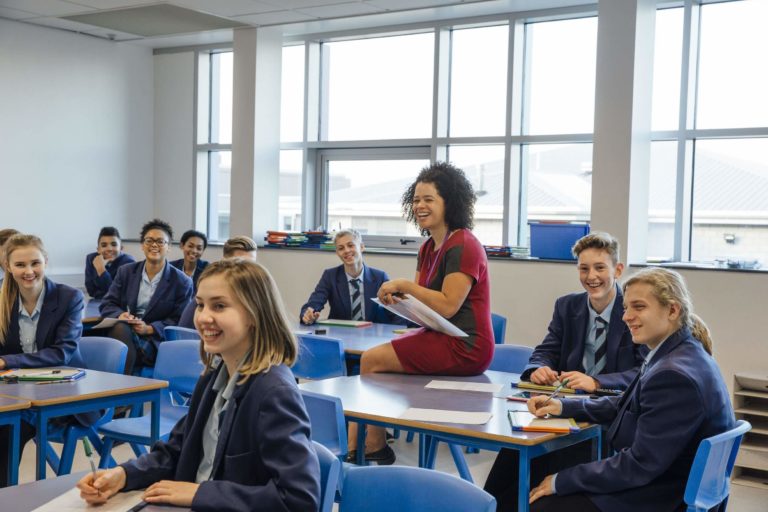The traditional classroom was wrought with straight rows and teacher-centered activities. It emphasized delivering information and often neglected to invest in learning engagement. While it behooves us to glean from the practices that preceded us, research suggests that a fresh, student-centered approach yields higher achievement. Below are some practical alternatives to the traditional classroom that will boost learning engagement and student performance.
How Alternative Learning Activities Engage Students
Alternative learning strategies are techniques that consider the students that you serve above all else. This approach requires a teacher to know his or her students and use this knowledge to drive instruction. As our society has evolved over time, our students have also changed. While we are not entertainers, it is our job to prioritize engagement in order to create a successful learning environment.
These strategies engage students through movement and cultural relevancy. They empower students to take ownership of their learning by understanding how they learn and implementing strategies for success. Alternative learning prepares students for a future where they can effectively discuss, process, work, and be life-long learners.
Alternative Learning Strategies
Flipped Classroom
As its name suggests, a flipped classroom inverts the structure of the traditional classroom. In a flipped classroom, students receive instructional content outside of the classroom. This replaces lectures and presentations that teachers would typically deliver during class time. Students are introduced to content at home, often through technology. During class time, students use their newly acquired knowledge to engage in collaboration, discussion, projects, and more.
Alternative Discussion Strategies
For classroom discussion to be effective students must be trained and engaged. Intentionally structuring your classroom discussion is key. Coming into a discussion armed with only a list of questions will often prove ineffective. First off, it assumes that students will be willing and able to discuss. More importantly, it leaves some students behind as there is no plan to integrate reluctant speakers.
One way to enhance your discussions is to add movement. Allow students to move around the classroom in small groups and discuss posted questions, or dust off the old faithful four corners game and add group and classroom discussion in. You can also implement what I call the “speed dating” discussion. In this discussion, students discuss a question or topic one-on-one for an allotted amount of time, then move on to another partner for the next discussion. Set up desks in two rows facing each other, or even go outside and have students face each other in two lines. Movement keeps students from becoming restless, and it’s a great way to stimulate your kinesthetic learners.
Innovative Homework
Homework and busy work should never be synonymous. Homework must be purposeful in order to be effective. Assigning homework that is an extension of classwork ensures that students understand your expectations and are prepared to do the work. This will yield higher performance on homework.
Another alternative to traditional homework is assigning homework that is relative and applicable to students’ home lives. This will require you having knowledge of the resources available to your students (i.e. technology). Assign a writing assignment that requires students to incorporate items in their home, for example, or assign math problems where they can locate certain angles or measure objects. This will make homework more engaging and increase real-world application.
Alternatives to Lecturing
It’s no coincidence that “boring classroom” scenes in movies always include a lecture. While lectures can disseminate a grand amount of information in a short amount of time, a lecture is not productive if students are not engaged and thus do not retain the information. Alternatives to lecturing should activate your students and shift your role from orator to facilitator.
Students can gain information through project-based learning, games, collaboration, and more. Technology like Skype and Google allows you to bring experts into your classroom and attend virtual field trips. When determining how your students receive information, it is important to know your students’ learning styles. Because all students do not learn the same, you must be intentional about differentiating your approach.
Why Differentiating will Maximize your Effectiveness
You can be honest – you have indubitably grown tired of hearing the word differentiation. When teachers have a clear understanding of what differentiation is, however, its importance is undeniable. Gone are the days when teaching was delivered in one fashion and students failed when that method did not align with their learning style. Differentiation considers each student’s needs and embeds those needs into instruction. It does not create different assignments for every child, but rather draws on each student’s strengths while building upon their weaknesses. Modifying the process by which students learn, the method in which students receive content, or the product that students produce for evaluation are all ways to differentiate. When breaking the mold of traditional education, a teacher must differentiate consistently.
The traditional classroom is the building block upon which we all stand. As modern-day educators, it is important that we build upon the wisdom of our predecessors with new strategies that are effective for today’s students. In a field that is ever-changing, the stagnancy of teachers will stall progress.




